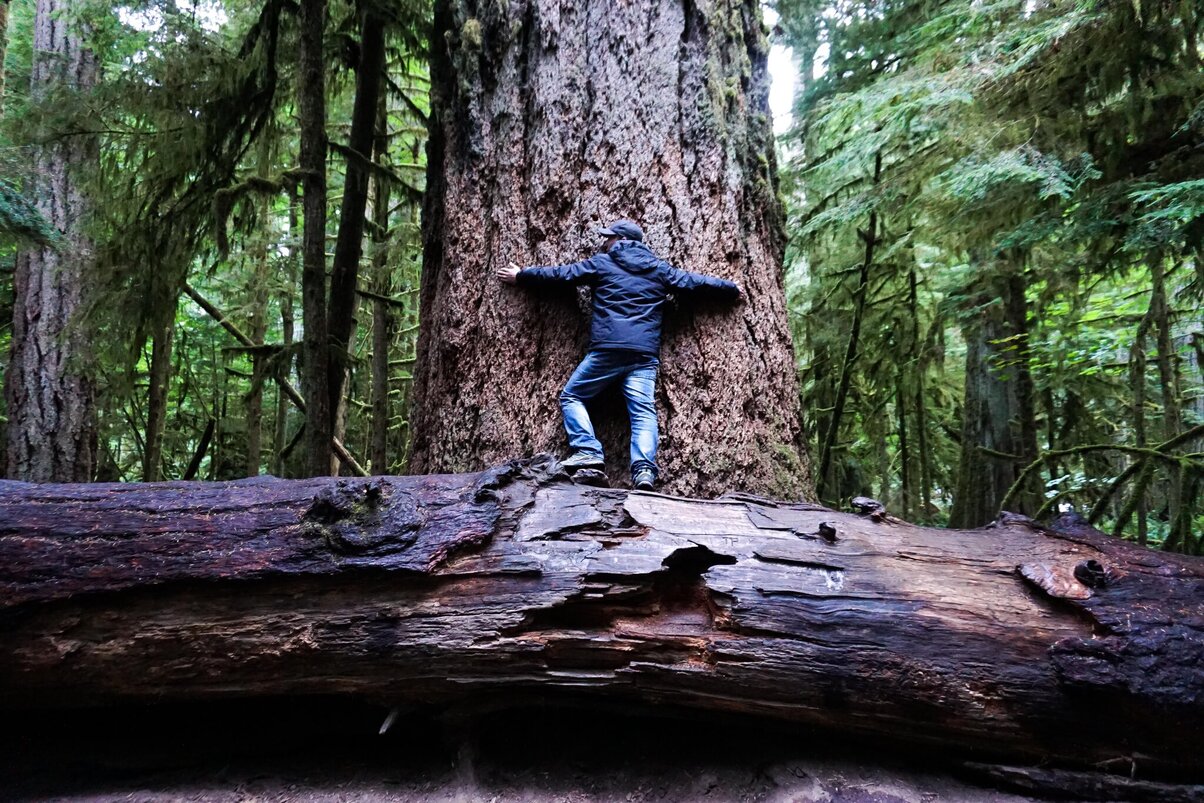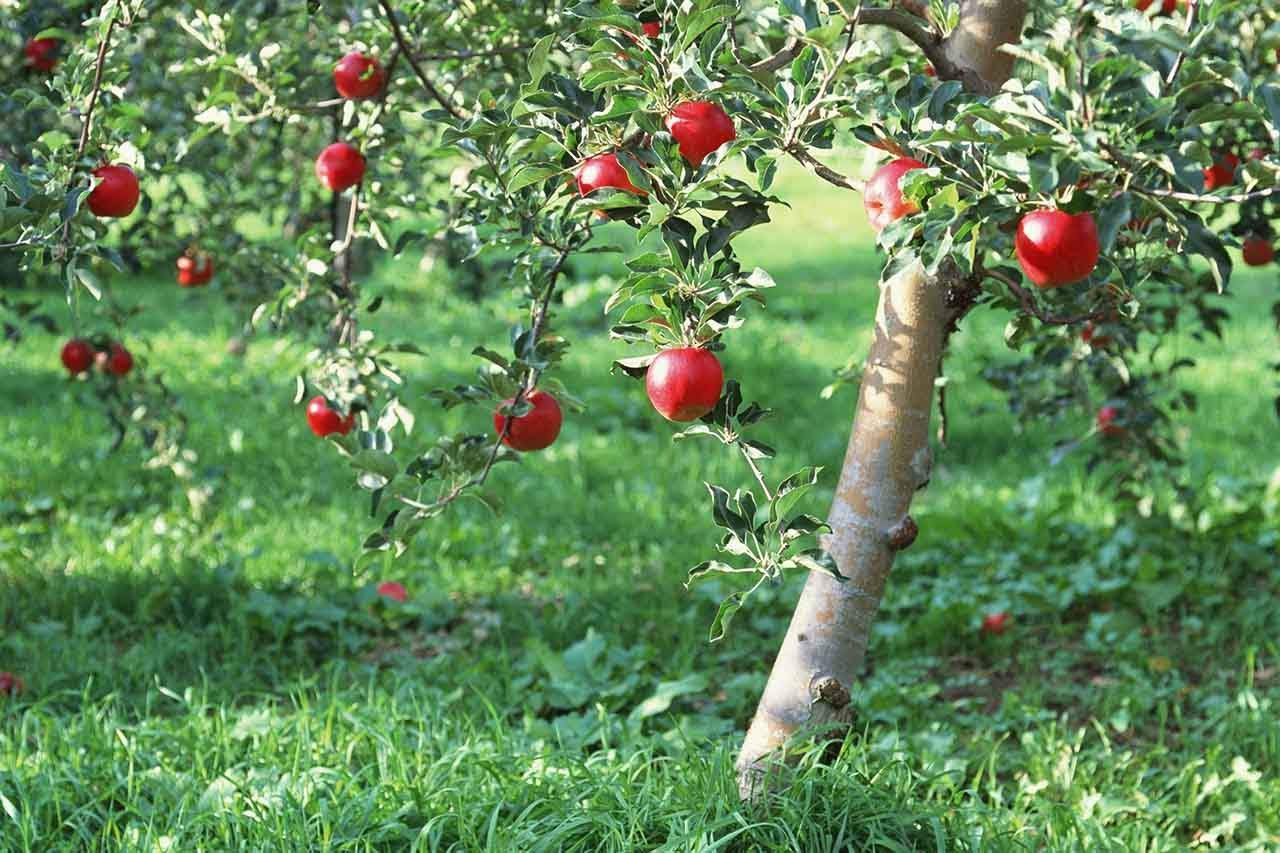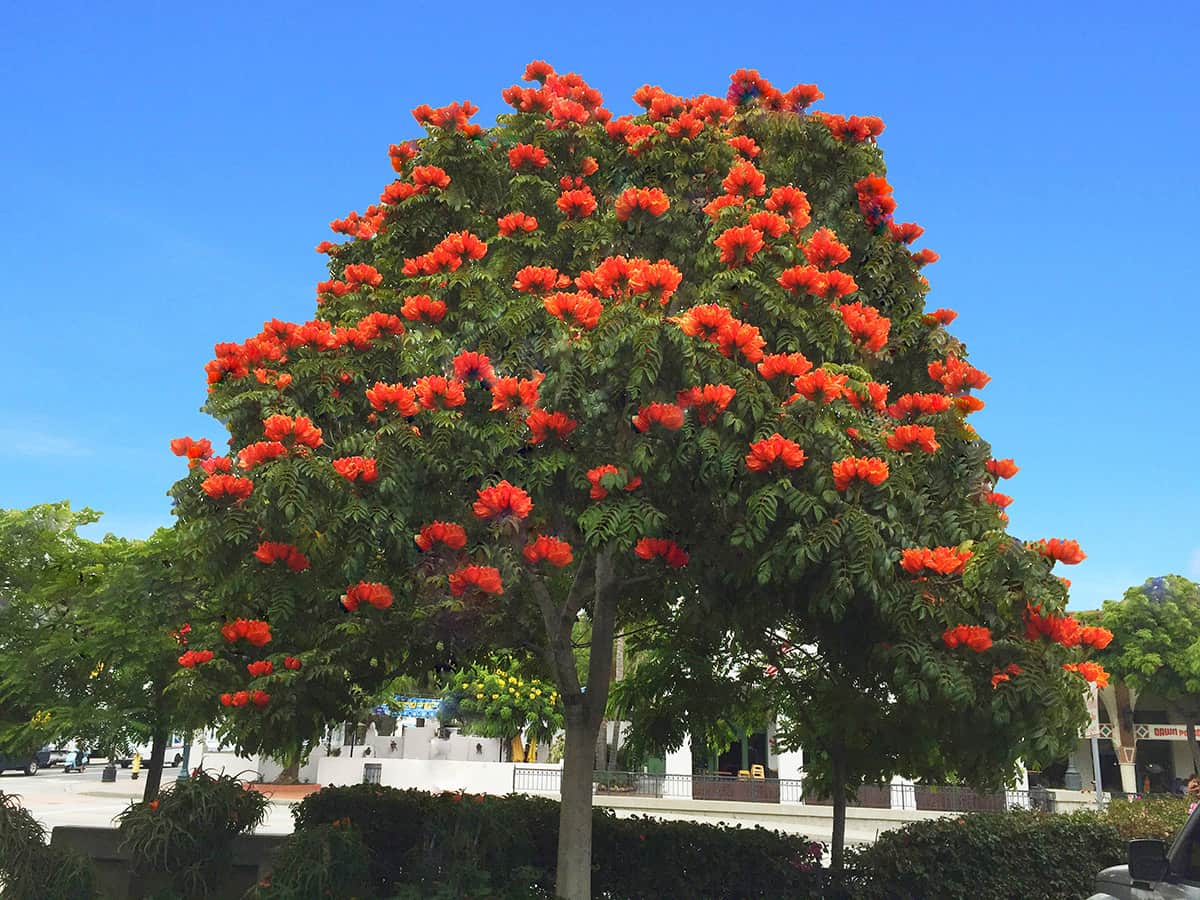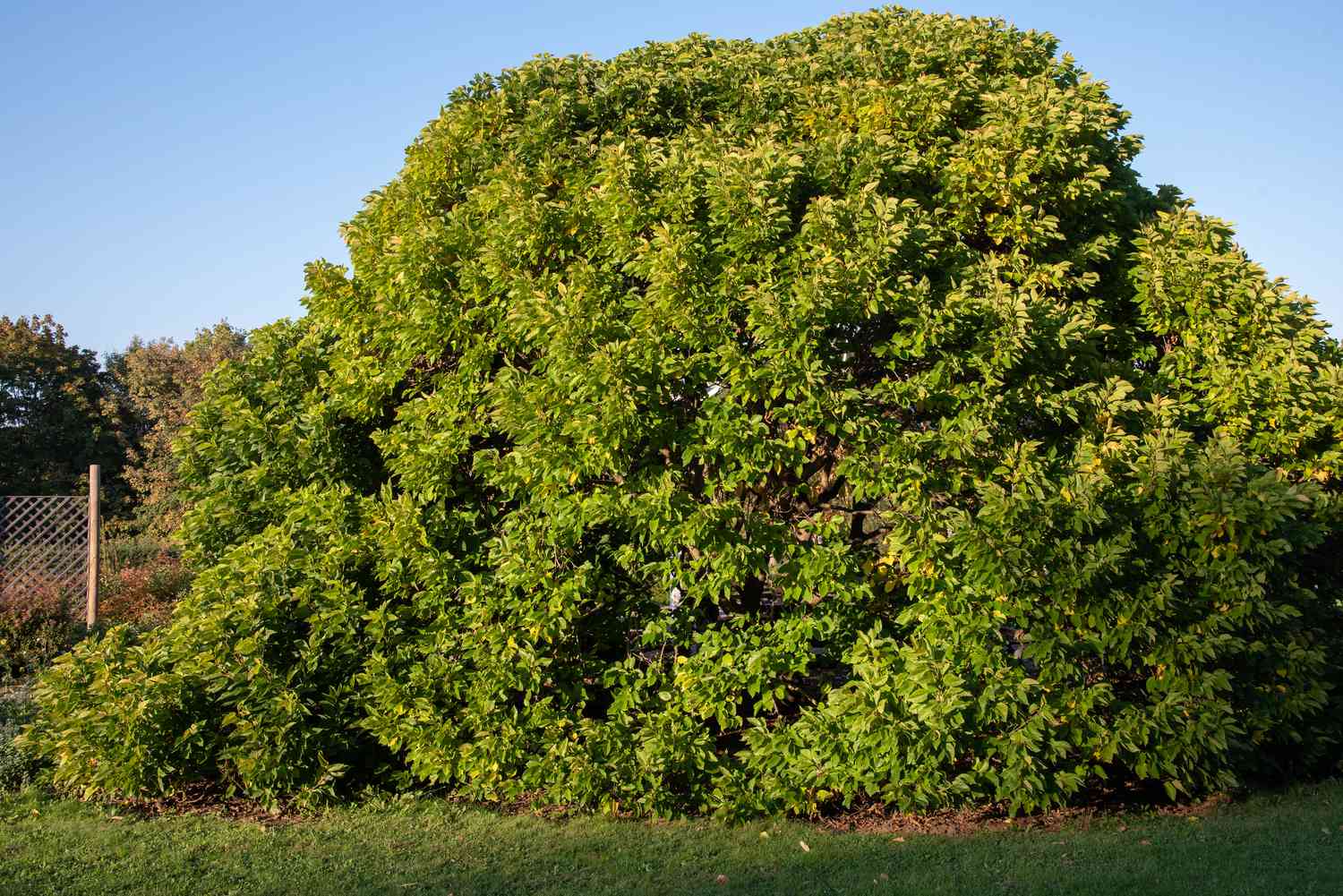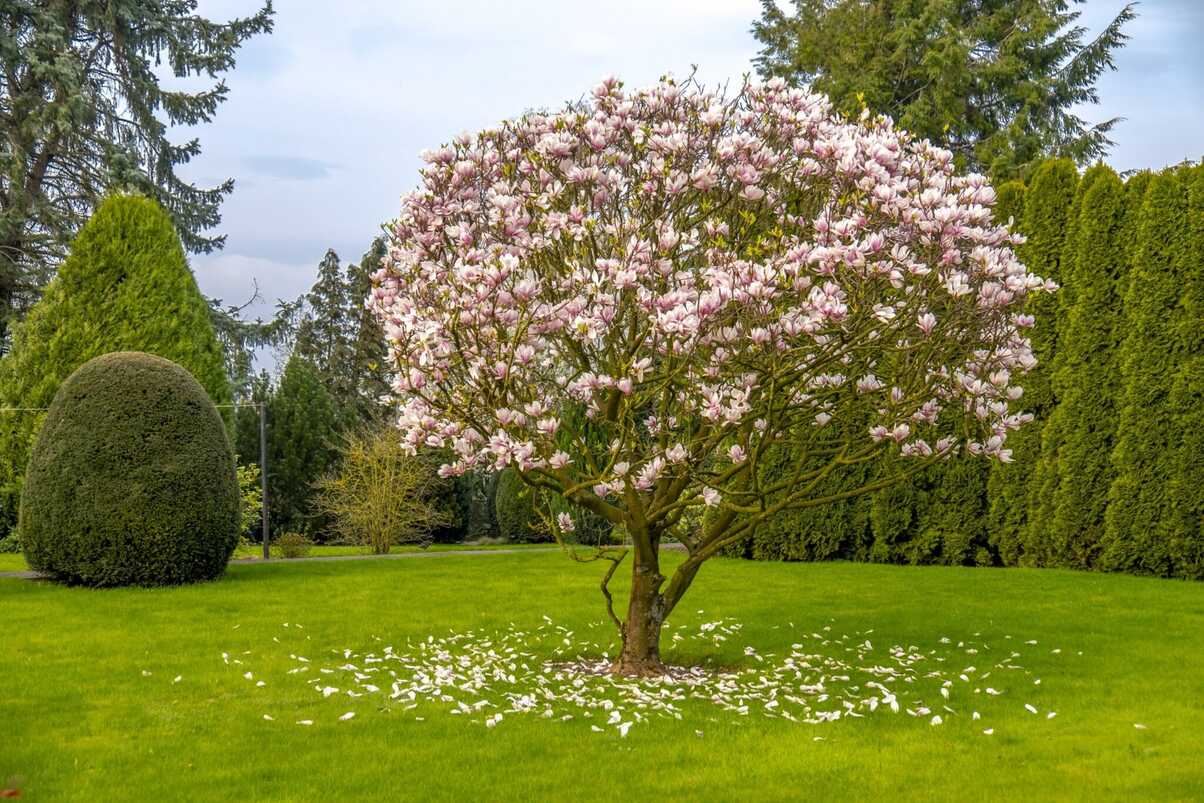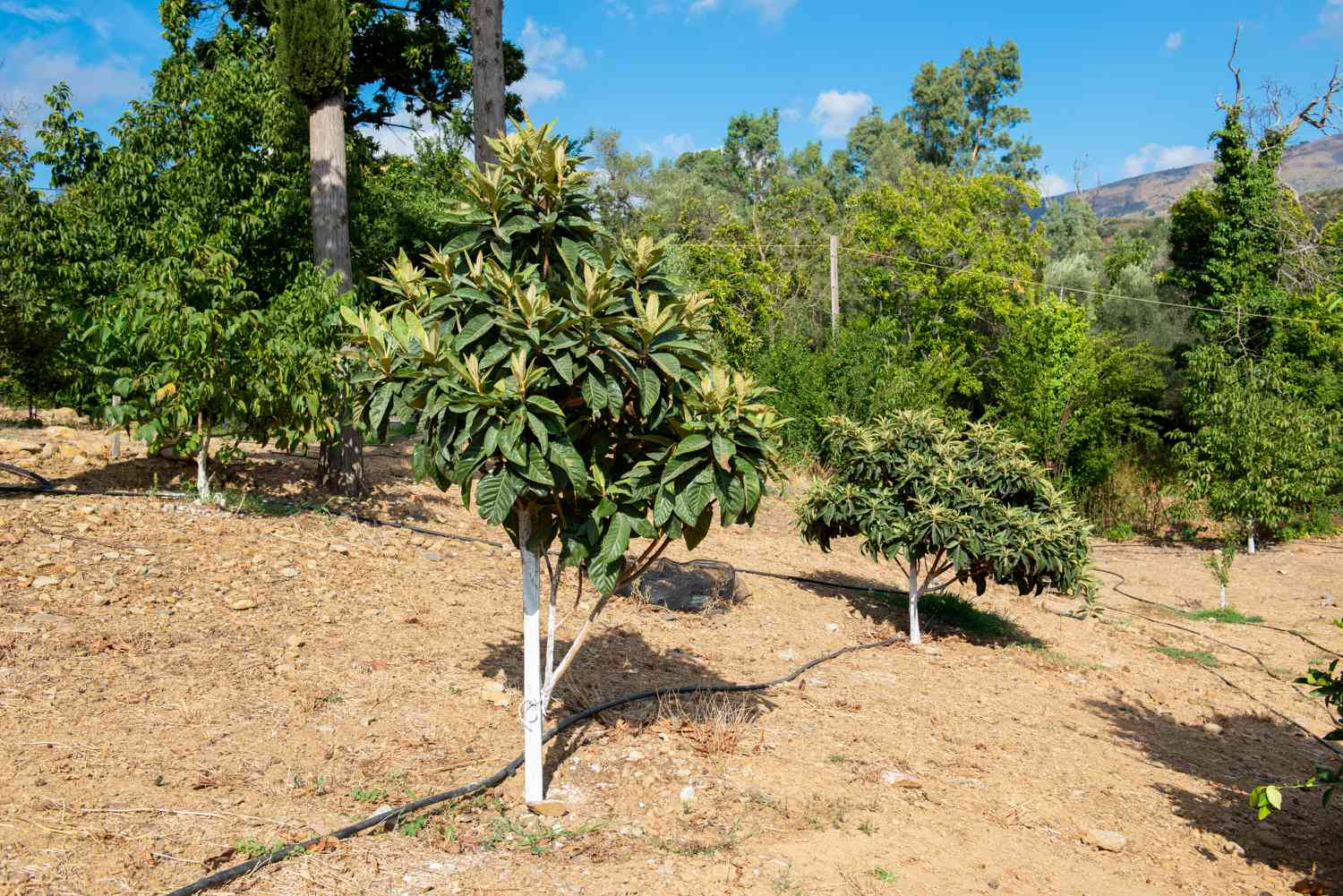Home>Gardening News and Trends>Latest News>How Do Trees Communicate With Each Other


Latest News
How Do Trees Communicate With Each Other
Modified: January 22, 2024
Discover the latest news on how do trees communicate with each other, and uncover the intriguing ways in which they share vital information for their survival.
(Many of the links in this article redirect to a specific reviewed product. Your purchase of these products through affiliate links helps to generate commission for Chicagolandgardening.com, at no extra cost. Learn more)
Table of Contents
Introduction
When we think of communication, we often envision humans chatting, animals making sounds, or even plants rustling in the wind. But did you know that trees also have their own unique way of communicating with each other?
Beneath the surface of the forest floor lies a hidden network of communication where trees interact and exchange vital information. It’s a fascinating world that scientists are just beginning to understand.
For the longest time, trees were considered silent and solitary beings, each one standing alone in the forest. However, recent research has revealed a complex system of communication that connects trees and allows them to share not only information, but also resources.
In this article, we will dive into the fascinating world of tree communication and explore the various ways in which trees interact with their environment and with each other.
From secret chemical signals to underground fungal networks, the world of tree communication is a marvel of nature’s interconnectedness. By gaining a deeper understanding of how trees communicate, we can appreciate the complexity and intelligence of these ancient organisms.
So join us as we uncover the mystery of tree communication and discover the hidden world of conversation happening right beneath our feet.
The Underground Network
Beneath the forest floor, an intricate underground network exists that connects trees and facilitates communication. This network consists of a vast web of fungal threads known as mycelium, which form a symbiotic relationship with the roots of trees. The mycelium acts as a kind of underground internet, allowing trees to send messages and share resources.
Through this network, trees are able to communicate information about their surroundings, such as the presence of pests, drought conditions, or even the availability of nutrients. Studies have shown that when a tree is under attack by insects, it can release chemical signals into the air that are picked up by neighboring trees. In response, these neighboring trees will start to produce defensive compounds to ward off the insects.
Furthermore, the underground network enables trees to share resources with one another. Trees that are experiencing a surplus of nutrients, such as in areas of high sunlight or nutrient-rich soil, can transfer some of their resources to neighboring trees that may be struggling. This sharing of resources ensures the survival and well-being of the entire community of trees.
Scientists have even found evidence of mother trees, older and more experienced individuals within a forest, nurturing and supporting the growth of younger trees. These mother trees have been observed sending nutrients and information through the underground network to help nearby saplings thrive.
The interconnectedness of trees through the underground network showcases the remarkable collaboration and cooperation that exists within a forest ecosystem. It illustrates that trees are not isolated individuals but rather part of a larger community that works together for the benefit of all.
As we delve deeper into the mysteries of the underground network, we gain a greater appreciation for the intricate and interconnected web of life that exists within a forest. It reminds us that there is so much more happening in the natural world than meets the eye.
Chemical Signals
One of the primary ways trees communicate with each other is through the release of chemical signals. When a tree is attacked by an herbivore or insect, it can release volatile organic compounds (VOCs) into the air, which are then detected by neighboring trees. These chemical signals serve as an early warning system, alerting nearby trees to the threat and triggering their own defensive responses.
Researchers have discovered that different types of insects trigger different chemical signals in trees. For example, when a tree is attacked by a specific species of caterpillar, it releases a specific blend of VOCs that other trees can recognize. This helps nearby trees to prepare their defenses accordingly, such as by producing toxins or attracting predators that feed on the insects.
Interestingly, trees are not only capable of releasing chemicals when under attack, but they can also detect and respond to signals from nearby trees. This means that they can recognize when a neighboring tree is experiencing distress and adjust their own physiology accordingly.
Moreover, trees can communicate with each other through the release of pheromones – chemical substances that trigger specific behaviors or responses in other individuals of the same species. These pheromones can influence the growth, development, and defense mechanisms of nearby trees, ensuring the survival and well-being of the entire community.
Chemical signaling plays a vital role in the forest ecosystem, allowing trees to coordinate their responses to threats and challenges. It fosters a sense of cooperation and mutual support among trees, enhancing their chances of survival in a dynamic and ever-changing environment.
Through the exchange of chemical signals, trees are able to communicate and collaborate on a level that was once unimaginable. This intricate form of communication highlights the sophistication and adaptability of these remarkable organisms, reinforcing the interconnectedness of all living beings in nature.
Fungal Connections
In addition to the underground network of mycelium, trees also communicate and establish connections through a mutually beneficial relationship with fungi. This symbiotic partnership is known as mycorrhizal association and is essential for the survival and growth of trees.
Mycorrhizal fungi form a close bond with the roots of trees, creating a vast network that extends far beyond the reach of their individual root systems. These fungi enhance the tree’s ability to extract nutrients from the soil, especially minerals like phosphorus and nitrogen that are crucial for growth.
But the relationship goes much deeper than nutrient exchange. The mycorrhizal fungi act as intermediaries between trees, facilitating communication and resource sharing. They can transfer nutrients, water, and even chemical signals between trees through their vast network of hyphae, the branching filaments of fungi.
Studies have shown that when a tree is in need of a particular nutrient, it can send signals through the fungal network to request assistance from neighboring trees. In response, nearby trees can allocate resources to help the struggling tree, ensuring the equilibrium and overall health of the forest ecosystem.
Furthermore, mycorrhizal fungi can also play a crucial role in defending trees against pathogens. When a tree is attacked by harmful microorganisms, the fungi can activate the tree’s immune response, triggering the production of defensive compounds. This defense mechanism not only protects the tree under attack but can also benefit neighboring trees by preemptively fortifying their immune systems.
The intricate network of mycelium and mycorrhizal association highlights the importance of cooperation and mutual support in the natural world. Trees and fungi work together to create a thriving ecosystem, where information, resources, and protection are exchanged for the benefit of all.
By deepening our understanding of the fungal connections within forests, we gain a greater appreciation for the interdependence and resilience of these incredible ecosystems. It is a reminder that in the intricate tapestry of nature, even the smallest organisms can have a profound impact on the survival and vitality of the whole.
Sharing Resources
In the interconnected world of trees, cooperation and resource sharing play a crucial role in their survival and overall well-being. Trees have developed remarkable mechanisms to support each other by sharing resources, ensuring the success of the entire community.
One of the ways in which trees share resources is through the network of mycelium and mycorrhizal associations. As mentioned earlier, trees can transfer nutrients, water, and even chemical signals through this fungal network. When a tree has an abundance of resources, it can allocate some of them to neighboring trees that may be struggling.
This resource sharing is not limited to the same species either. Studies have shown that even different tree species can exchange vital resources through the fungal network. This supports the idea that forests are complex ecosystems where diverse species work together in harmony.
But it goes beyond nutrient sharing. Trees also engage in what scientists call “crown shyness” or “canopy avoidance.” When trees grow close to each other, they naturally space out their branches, creating gaps in the canopy. This phenomenon allows sunlight to reach the lower levels of the forest, supporting the growth of understory plants and providing ecological benefits to the entire ecosystem.
Furthermore, trees go the extra mile by providing support to their neighboring saplings. Older and more established trees, known as “nurse trees,” can provide shade, protection from wind, and even transfer nutrients to younger trees that may be struggling to establish themselves.
By sharing resources, trees demonstrate a selfless and cooperative nature. They understand the importance of collective well-being and work together as a community to ensure the vitality and resilience of the forest ecosystem.
This remarkable cooperation and resource sharing among trees showcase not only their intricate communication systems but also their deep sense of interconnectedness. It is a reminder that nature operates in a delicate balance, where individual organisms contribute to the health and sustainability of the whole.
Warning Signals
Trees have a remarkable ability to communicate warning signals to each other, alerting nearby individuals of potential threats in their environment. When a tree is under attack by herbivores or insects, it releases chemical signals into the air that neighboring trees can detect.
These warning signals serve as an early warning system, allowing nearby trees to activate their own defense mechanisms. When trees receive the chemical message, they can initiate processes such as producing defensive compounds, strengthening their cell walls, or emitting compounds that attract predators of the attacking insects.
Research has shown that trees can differentiate between different types of threats and tailor their response accordingly. They can release specific combinations of volatile organic compounds (VOCs) depending on the specific herbivore or insect that is attacking them. This selective response helps neighboring trees to prepare for the incoming threat and increases their chances of survival.
Furthermore, these warning signals can travel through the underground network of mycelium, allowing trees that are located farther away to also receive the message. This long-distance communication ensures that the entire forest population is informed and can mount a collective defense.
It is fascinating to think about the intricate and efficient signaling system that trees have developed over time to protect themselves and their community. Through chemical communications, they are able to relay messages of danger and activate defenses, promoting the survival and resilience of the forest ecosystem.
By studying and understanding these warning signals, scientists can gain valuable insights into how trees cope with environmental stressors and the complex dynamics of forest communities. It highlights the sophistication and adaptability present in even the seemingly silent and stationary beings of the natural world.
Defense Mechanisms
Trees have developed a variety of defense mechanisms to protect themselves from potential threats in their environment. These mechanisms allow trees to ward off herbivores, insects, diseases, and even competing plants, ensuring their survival and the health of the forest ecosystem.
One of the primary defense mechanisms employed by trees is the production of toxic compounds. When a tree is under attack, it can release chemicals that are toxic to herbivores or insects, deterring them from feeding on its leaves or bark. These compounds can cause digestive disturbances or even act as neurotoxins in the attackers, discouraging them from inflicting further damage.
In addition to toxic compounds, trees can also strengthen their defenses through physical barriers. They can produce thicker bark, which acts as a protective shield against external threats. Trees can also close off wounds or damaged areas by forming callus tissue, preventing the entry of pathogens and promoting healing.
Another fascinating defense mechanism displayed by certain tree species is the ability to produce resin or sap. When a tree is wounded, it can release resin that acts as a sticky trap for insects or pathogens. The resin traps and seals off the invaders, preventing them from spreading to other parts of the tree or infecting neighboring trees.
Furthermore, some trees have evolved the ability to change the composition of their foliage in response to herbivore attacks. When a tree is being eaten by insects, it can alter the chemical composition of its leaves, making them less palatable or even toxic to the attackers. This defense mechanism can deter herbivores from feeding on the tree or even attract predators that feed on the insects.
Trees also possess a remarkable ability to “remember” past attacks. If a tree has been previously targeted by a specific insect or pathogen, it can activate its defense mechanisms more quickly and efficiently in subsequent attacks. This memory-like response allows trees to adapt and better defend themselves against recurring threats.
Through their diverse array of defense mechanisms, trees demonstrate an extraordinary capacity to protect themselves and maintain the health of the forest ecosystem. Their ability to adapt and respond to threats highlights the resilience and ingenuity of these ancient organisms.
Studying these defense mechanisms provides us with valuable insights into the intricate interactions between trees and their environment. It deepens our understanding of the strategies trees employ to safeguard their well-being and ensures the sustainability of forests around the world.
Communication through Scent
In addition to chemical signals, trees also communicate with each other through the release of scents or aromas. Volatile organic compounds (VOCs) emitted by trees can convey important information and play a role in various ecological interactions within the forest ecosystem.
Scent communication in trees occurs primarily through two mechanisms: indirect and direct communication. Indirect communication happens when trees release VOCs into the air, which can be detected by neighboring trees. These scents carry information about a wide range of factors, including the presence of pests, drought conditions, or even the ripening of fruits.
For example, when a tree is being attacked by herbivores or insects, it can emit specific scents that alert nearby trees to the imminent threat. These scents prompt neighboring trees to activate their defense mechanisms and increase their resistance against potential attacks. In this way, trees can communicate and coordinate their responses to common challenges.
Direct communication through scent is also observed between certain tree species. Some trees release scents or fragrances that serve as attractants for beneficial insects, such as pollinators or natural predators of pests. By emitting specific aromas, trees can attract these helpful insects, promoting pollination and natural pest control.
The volatile compounds released by trees can also influence the growth and behavior of neighboring plants. Some trees emit scents that act as allelochemicals, which can affect the germination, growth, or survival of other nearby plants. This chemical signaling helps trees to compete with other plants for resources, ensuring their own survival and optimizing their ecological niche.
Overall, scent communication allows trees to exchange vital information, coordinate responses, and establish beneficial interactions with other organisms in the forest ecosystem. It is a sophisticated and intricate form of communication that contributes to the overall health and vitality of the forest community.
By delving into the world of scent communication, scientists gain a better understanding of the complex web of interactions taking place among trees and their environment. It highlights the remarkable adaptability and interconnectedness of plants, reminding us of the rich and nuanced language that exists in the natural world.
Tree Talk: Sound Communication
While we often associate trees with a world of silence, research suggests that they also engage in a form of communication through sound. While their sounds may not be audible to the human ear, trees produce vibrations and acoustic signals that can transmit important information within their environment.
One of the most well-known forms of sound communication in trees is known as “cavitation.” When a tree’s water transport system experiences a sudden disruption, such as during a drought or a freeze, air-filled bubbles can form and then collapse within the xylem vessels. This collapse creates a distinct popping sound that can travel through the tree, alerting neighboring trees to the water stress.
Another form of sound communication is the rustling of leaves or branches in the wind. The rustling sound carries information about the strength and direction of the wind, which can be beneficial for neighboring trees as they adjust their growth patterns or position themselves for optimal sunlight exposure.
Recent studies have also found evidence that trees can produce low-frequency vibrations in response to environmental factors such as wind, water flow, or animal activity. These vibrations can travel through the root system and the trunk, allowing trees to share information about potential threats or changes in their surroundings.
While the exact purposes and meanings of these acoustic signals are still being explored, it is clear that sound communication plays a role in the complex web of interactions within the forest ecosystem. It is a way for trees to stay connected and exchange vital information even without direct physical contact.
It’s important to note that sound communication in trees is different from intentional communication found in animal species. Trees do not possess vocal cords or the ability to create specific sounds for specific messages. Instead, their sounds are generated as a result of physiological or environmental processes. Nevertheless, these sounds can still convey important information that aids in the survival and growth of the tree community.
As scientists delve deeper into the realm of sound communication in trees, we can anticipate further discoveries and a deeper understanding of the intricacies of their communication systems. The study of sound communication adds yet another layer of fascination to the remarkable world of trees, highlighting their adaptability and interconnectedness in the natural environment.
Conclusion
The world of tree communication is a fascinating and awe-inspiring domain that highlights the interconnectedness and complexity of nature. From the underground network of mycelium to chemical signals, scents, and even sound communication, trees possess a rich repertoire of methods to interact and share information with their environment and fellow trees.
Through chemical signals, trees alert each other to potential threats, coordinate defense mechanisms, and even share resources. The vast underground network of mycelium enables trees to exchange nutrients, water, and knowledge, fostering a sense of community and cooperation within the forest ecosystem.
Scent communication allows trees to convey information about their health, attract helpful insects, and even influence the growth of neighboring plants. Sound communication, while still being explored, provides another dimension to tree communication, enabling them to transmit warnings and share environmental cues.
Throughout the exploration of tree communication, it becomes evident that these seemingly silent and stationary organisms are anything but isolated individuals. Trees are interconnected, interdependent, and actively engaged in a sophisticated web of communication that ensures the survival and balance of the forest ecosystem.
Studying tree communication opens up new avenues of scientific research and deepens our understanding of the natural world. It allows us to grasp the remarkable intelligence and resilience of trees, illustrating their ability to adapt, cooperate, and thrive in diverse environmental conditions.
Moreover, recognizing the complex communication systems within trees challenges our perception of what it means to be alive and capable of interaction. It emphasizes the importance of preserving and respecting the natural world, where even the quietest voices can have a profound impact.
So the next time you walk through a forest, take a moment to appreciate the intricate conversations happening beneath your feet and above your head. Pay attention to the scents in the air, the rustling of leaves, and the unity that binds the trees together. It is a symphony of communication that reminds us of the beauty and interconnectedness of life on our planet.

